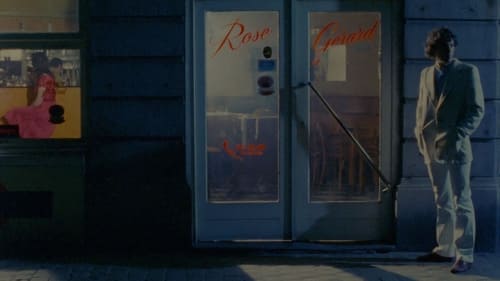
Following over two dozen different people in the almost wordless atmosphere of a dark night in a Brussels town, Akerman examines acceptance and rejection in the realm of romance.

Writer
Samy Szlingerbaum made his film Dakh-Brisel (Brussels-Transit) in 1980, thirty years after any Yiddish feature film had been produced. Szlingerbaum felt that the only way he could relate the story of his family’s search for refuge after World War II was in Yiddish. This Belgian-based filmmaker, deeply impacted by New York experimental cinema, gives us a masterful blend of powerful drama and stark documentary to tell the story of postwar European Jewry. Home, as it had been, no longer exists, and all that Samy’s family wants is a place in which to sink new roots.

Director
Samy Szlingerbaum made his film Dakh-Brisel (Brussels-Transit) in 1980, thirty years after any Yiddish feature film had been produced. Szlingerbaum felt that the only way he could relate the story of his family’s search for refuge after World War II was in Yiddish. This Belgian-based filmmaker, deeply impacted by New York experimental cinema, gives us a masterful blend of powerful drama and stark documentary to tell the story of postwar European Jewry. Home, as it had been, no longer exists, and all that Samy’s family wants is a place in which to sink new roots.

Director

N°113
Reel 12 of Gérard Courant's on-going Cinematon series.

Cinematography
Symphonie mixes fiction with reality. The author, Romain Schneid, tells the story of his own claustrophobia in front of the camera when, when he was 12 years old, hiding as a Jew during the German occupation, he could not leave a tiny apartment. He tells and he plays alone all the characters in his drama. He invents, deforms, imagines another end. He is at the same time the author, the narrator and the actor (the actors). Did he really experience what he's talking about, or did all that happen in his head? Are we facing a testimony or a delusion?

Sound
Basado en una historia que la propia cineasta escribió en París en 1968, el filme se divide en tres secciones de análisis: Tiempo de Subjetividad, Tiempo del Otro y Tiempo de la Relación. Los tres tiempos son actuados por la propia cineasta en el personaje de Julie, una solitaria que ejecuta actividades repetidas hasta culminar en una escena lésbica provocativa y voyeurista.

Writer
On a wet August 15th, with time on hold, Chris, a young Finnish woman recently arrived in Paris and taken in by one of Chantal Akerman's friends, confides herself. On the one hand, her long, non-stop monologue of trivialities pours a non-expressed angst. On the other hand, her portrait in fixed shots captures her gestures. - Doclisboa

Director
On a wet August 15th, with time on hold, Chris, a young Finnish woman recently arrived in Paris and taken in by one of Chantal Akerman's friends, confides herself. On the one hand, her long, non-stop monologue of trivialities pours a non-expressed angst. On the other hand, her portrait in fixed shots captures her gestures. - Doclisboa






